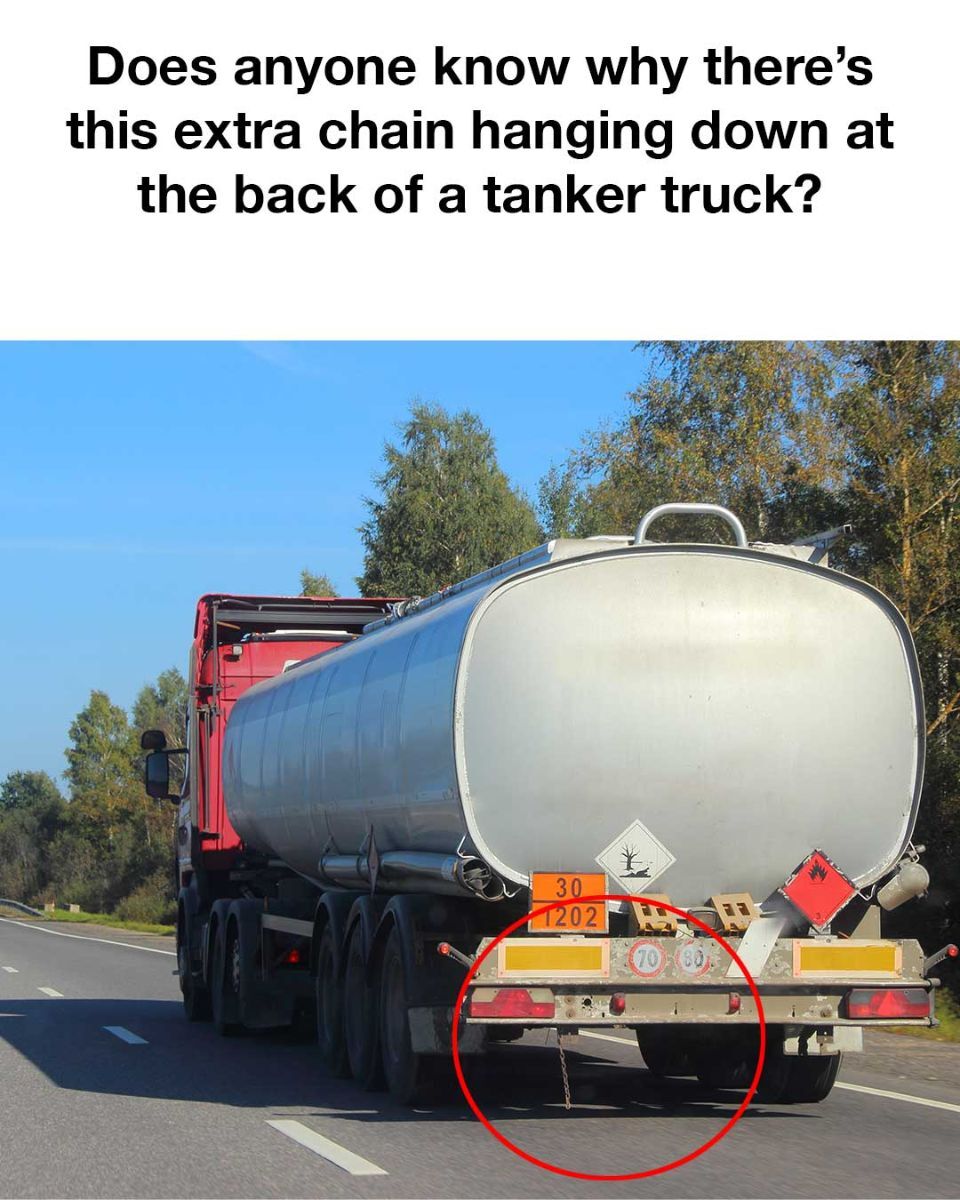Tanker trucks are specially designed vehicles that transport various liquids and gases, including gasoline, water, chemicals, and even food-grade substances. These vehicles feature a large, cylindrical tank mounted on a durable truck frame, engineered to safely contain and move potentially hazardous materials from one location to another.

A key component visible on many tanker trucks is a chain hanging from the rear; although it might appear trivial, this chain plays a crucial role in ensuring safety during transport. Its primary function is to dissipate static electricity that builds up inside the tank as its contents shift and slosh during transit. Much like the static charge generated when rubbing a balloon on your hair, the movement of flammable liquids creates friction that leads to an accumulation of electrical charge. Without proper grounding, this static electricity can discharge as sparks, which may ignite volatile vapors and result in dangerous fires or explosions. The chain maintains constant contact with the ground, providing a safe conduit for the static charge to flow harmlessly into the earth and thereby reducing the risk of accidental ignition. The practice of using grounding chains became standard after early incidents demonstrated how static discharge could lead to severe accidents, including devastating fires and explosions that caused significant damage and loss of life. As the hazards of static electricity in fuel transport became widely recognized, industry experts and regulatory bodies introduced strict safety protocols. Organizations such as the United States Department of Transportation have established guidelines that specify requirements for tanker truck construction, including pressure limits, structural integrity, and methods for controlling static electricity. Under these regulations, the grounding chain is a mandatory feature that is routinely inspected to ensure it remains in proper working order. Static electricity naturally occurs when two surfaces come into contact and then separate, creating an imbalance of electrical charges. Inside a tanker truck, the friction generated by moving fuel can produce a charge significant enough to pose a hazard in the presence of flammable vapors.
The grounding chain serves as a simple yet effective means to neutralize this risk by channeling the charge safely to the ground. In addition to traditional grounding chains, modern tanker trucks may incorporate other technologies to enhance safety. Some trucks are equipped with cable reels that connect to a grounding point during loading and unloading, while chemical additives and advanced coatings are sometimes used to minimize friction and reduce static buildup. Despite these technological advancements, the grounding chain remains an indispensable safety feature because of its simplicity and proven effectiveness. There are several common misconceptions about the chain. Some assume it is meant to stabilize the truck or assist with braking, while others regard it as an outdated component made unnecessary by modern innovations. In reality, its sole purpose is to safely discharge static electricity, thereby preventing the ignition of flammable substances. Regular maintenance and careful inspections are essential to ensure that the chain remains effective. Over time, exposure to harsh environmental conditions can lead to wear, rust, or damage, compromising its ability to conduct electrical charges to the ground. It is therefore vital that the chain is routinely checked and replaced when necessary to uphold safety standards in fuel transportation. Ultimately, the chain hanging from the back of a tanker truck is far more than a simple accessory; it is a critical element in preventing accidents and ensuring that hazardous materials are transported safely and efficiently. By providing a constant path for static electricity to be discharged into the earth, the grounding chain helps protect both transport personnel and the general public from the potential dangers of fires and explosions. This modest yet essential feature embodies the rigorous safety standards that underpin modern tanker truck design and operation, illustrating how even the simplest components can have a profound impact on overall safety. Maintaining and understanding this critical grounding chain is indispensable for safe fuel transportation practices across America.





